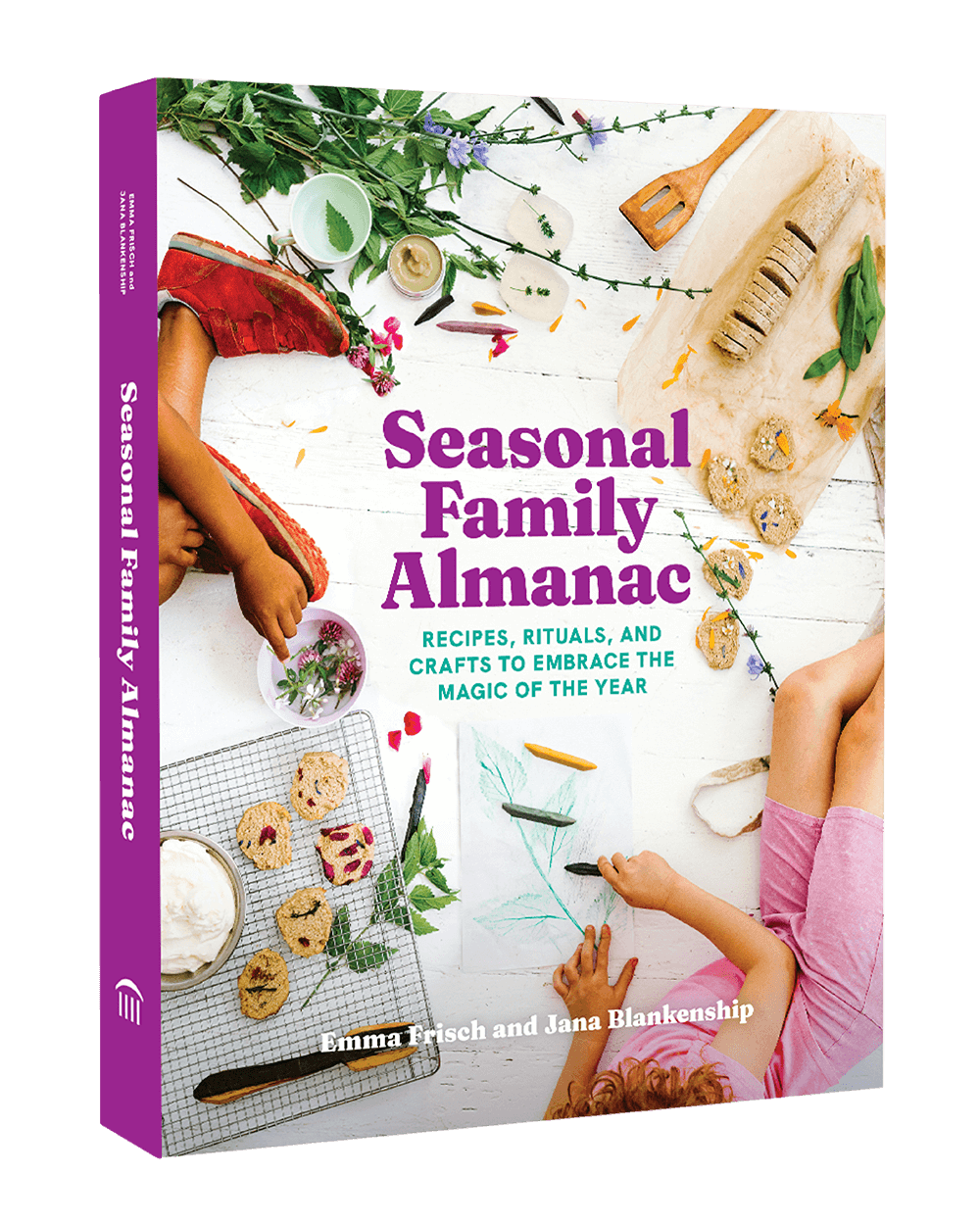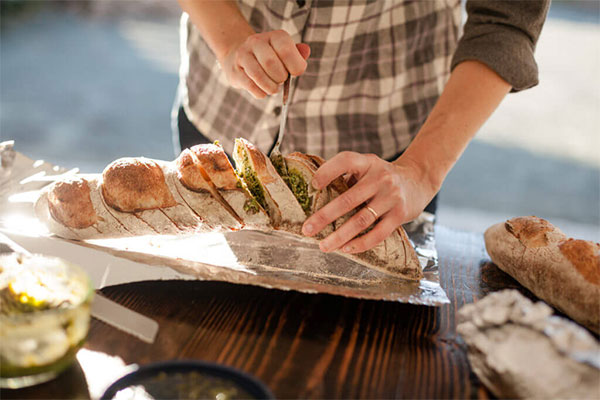Rainbow Chard, Crouton & Minto Pesto (and How to Store Fresh Bread)
Last Thursday eve I had the pleasure of sharing my kitchen with Wide Awake Bakery’s owner and dough master, Stefan Senders. We taught the fourth class in the Cooking out of the (CSA) Box series, with a jovial and diverse group of twelve students who came to learn how to transform farm-fresh bounty into moutwatering meals for family and friends. The theme of this class was “The Life of the Loaf,” where we learned how to keep bread on hand for months at a time while savoring every last crumb in a variety of forms and recipes. (See class pictures from our “Spring into Summer” class with Katie Church).
Stale bread? Stefan’s never heard of it! His approach: Let your bread be your teacher. Learn the life cycle of your bread; appreciate its changes; embrace its complexity, experience its changing beauty. Oh, Stefan’s passion for bread is captivating! Stefan showed us how to store a fresh loaf to prolong a soft interior, and then how to fashion various types of croutons, crumbs and sweet, caramelized crumbles into celebrated ingredients for a range of dishes. The evening’s menu was ambitious and sublime:

Consider joining Stefan’s Crust Fund for an artisanal weekly loaf that will FILL you with joy. Then, follow Stefan’s advice on making every last crumb count.
Freezing bread: For long term storage, freezing works very well. Wrap the bread in plastic wrap and freeze. Thaw, still wrapped on the counter. Put the bread, unwrapped, in a 350 degree (F) oven for ten minutes to fully revitalize.
Room temperature storage: Medium term storage is best at room temperature or a little warmer. Bread boxes work very well: you will experience some hardening, but not too much. Paper bags will work almost as well as a bread box. To keep the bread soft, store it in a plastic bag.
- Day One: Devour a slice, immediately, and store the cut-side face down on a cutting board. The crust will act as a seal to keep the bread soft inside. That evening, put your loaf in a paper bag or bread box.
- Day Two: Continue eating and store the remainder of your loaf in a plastic bag.
- Day Three: Repeat.
- Day Four: Slice your bread with a good knife and lightly fry it in a pan with olive oil. Eat.
- Day Five: Cut or tear croutons. (Recipe below)
- Day Six: Make bread pudding!
- Day Seven: Well, you might want to get a smaller loaf next time, or make bread crumbs.
Stefan’s Homemade Croutons
Croutons are chunks of toasty bread—delicious, crunchy, mouth-pleasing—and they’re easy to make. Just cut up your aging bread and put it in the oven (try around 400 degrees F, pre-heated). You can drizzle olive oil on the bread first if you like, or just toast it dry. Like crumbs, spices and herbs (fresh or dried) are a lovely and easy addition to croutons. I always enjoyed eating commercial, bagged croutons when I was a kid, but it wasn’t until recently that I began really understanding what they could offer. Croutons can be all sizes and shapes, and they can take almost any flavor you can come up with. They’re a lot more than bread cubes!

Rainbow Chard, Crouton & Minto Pesto (and How to Store Fresh Bread)
Combine all of the ingredients, except for half of the olive oil, in a blender or food processor. Pulse a few times to mince and mix the ingredients. Blend continuously while slowing drizzling the remaining cup of olive oil until the pesto is will blended into a thick spread.
Extending the Harvest: How to Freeze (Any) Pesto
Freezing pesto is easy and means you always have a quick dinner or added seasoning on hand. There are two ways I like to freeze pesto.
Fill a plastic Tupperware with pesto, leaving about half an inch of “headspace” between the top of the container and the surface of the pesto, giving it room to expand. Seal with a lid and store in the freezer. Use the whole container or defrost the pesto slightly and scoop out the desired portion. Refreeze the remaining pesto.
Fill an ice tray with pesto to form pesto cubes. Store the ice tray in two Ziploc freezer bags to prevent freezer burn. Pop out pesto cubes as needed.
- Prep Time: 10 minutes
- Cook Time: 5 minutes
- Total Time: 15 minutes
- Yield: 1 cup
Ingredients
- Chard leaves – 4 cups coarsely chopped and rinsed, stripped from stem
- Mint leaves – 2 cups rinsed fresh mint leaves, stripped from stem
- Olive oil – 1/3 cup
- Sunflower seeds – 1/4 cup + 3 tablespoons, toasted
- Lemon juice – 2 tablespoons, freshly squeezed
- Garlic – About 1.5 tablespoon, coarsely chopped
- Croutons – 1/3 cup
- Sea salt – 1/2 teaspoon
- Black pepper – 1/2 teaspoon
- Parmesan (optional) – ½ cup, grated
Instructions
- Combine all of the ingredients, except for half of the olive oil, in a blender or food processor. Pulse a few times to mince and mix the ingredients. Blend continuously while slowing drizzling the remaining cup of olive oil until the pesto is will blended into a thick spread.
- Extending the Harvest: How to Freeze (Any) Pesto
- Freezing pesto is easy and means you always have a quick dinner or added seasoning on hand. There are two ways I like to freeze pesto.
- Fill a plastic Tupperware with pesto, leaving about half an inch of “headspace” between the top of the container and the surface of the pesto, giving it room to expand. Seal with a lid and store in the freezer. Use the whole container or defrost the pesto slightly and scoop out the desired portion. Refreeze the remaining pesto.
- Fill an ice tray with pesto to form pesto cubes. Store the ice tray in two Ziploc freezer bags to prevent freezer burn. Pop out pesto cubes as needed.











